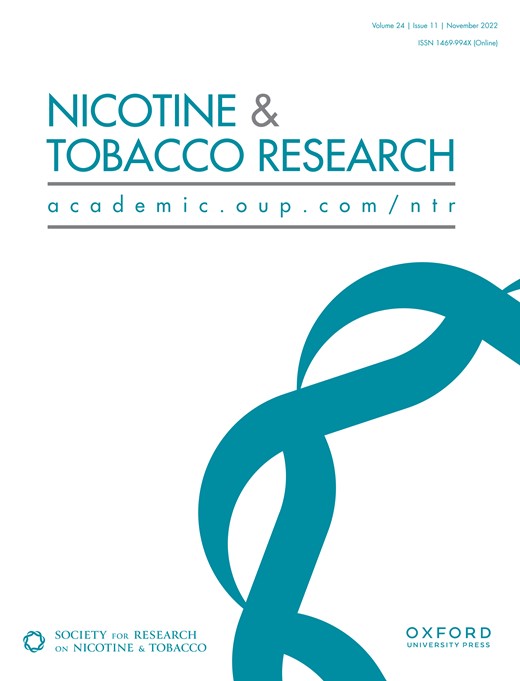-
Views
-
Cite
Cite
Katrina A Vickerman, Kelly M Carpenter, Lyndsay N Miles, Johnathan M Hsu, Karen A Watt, Thomas H Brandon, Jonathan T Hart, Harold S Javitz, Theodore L Wagener, A Randomized Pilot of a Tailored Smoking Cessation Quitline Intervention for Individuals Who Smoke and Vape, Nicotine & Tobacco Research, Volume 24, Issue 11, November 2022, Pages 1811–1820, https://doi.org/10.1093/ntr/ntac129
Close - Share Icon Share
Abstract
Although e-cigarettes are not a federally approved tobacco cessation aid in the United States, many smokers use them to quit or cut down on smoking. Tailored behavioral support could improve rates of complete smoking cessation for those individuals.
A novel behavioral treatment to help dual cigarette and e-cigarette users quit smoking was tested in a randomized pilot with a state tobacco quitline. Ninety-six dual users of cigarettes and e-cigarettes were recruited from incoming state quitline callers and randomized to receive enhanced e-cigarette coaching (EEC) or quitline treatment as usual (TAU) to examine EEC feasibility and acceptability. Outcomes at 3 months were treatment satisfaction, engagement, beliefs, and smoking cessation. This pilot was not powered to detect differences in quit rates.
Sixty-nine percent responded to the 3-month survey. EEC treatment satisfaction was noninferior to TAU: 93.8% (30/32) of EEC and 73.5% (25/34) of TAU reported being “very satisfied” or “satisfied” with treatment, respectively. EEC participants completed more coaching calls than TAU (M = 3.4 vs. M = 2.7, p = .03), and the majority in both groups elected to receive nicotine replacement therapy (EEC: 100%, TAU: 94%, p = .24). With missing data imputed as smoking, intent-to-treat 7-day point prevalence smoking abstinence rates were 41.3% (19/46) for EEC and 28.0% (14/50) for TAU (p = .20).
The EEC quitline intervention for dual cigarette and e-cigarette users demonstrated high levels of treatment satisfaction and engagement. This pilot was not powered to detect significant differences in smoking cessation; however, cessation rates were promising and warrant evaluation in a fully powered trial.
If this scalable behavioral treatment to help dual cigarette and e-cigarette users quit smoking proves to be effective in a larger trial, quitlines could implement this harm reduction approach to improve outcomes for callers who already use e-cigarettes and are planning to use them while quitting smoking.






Comments